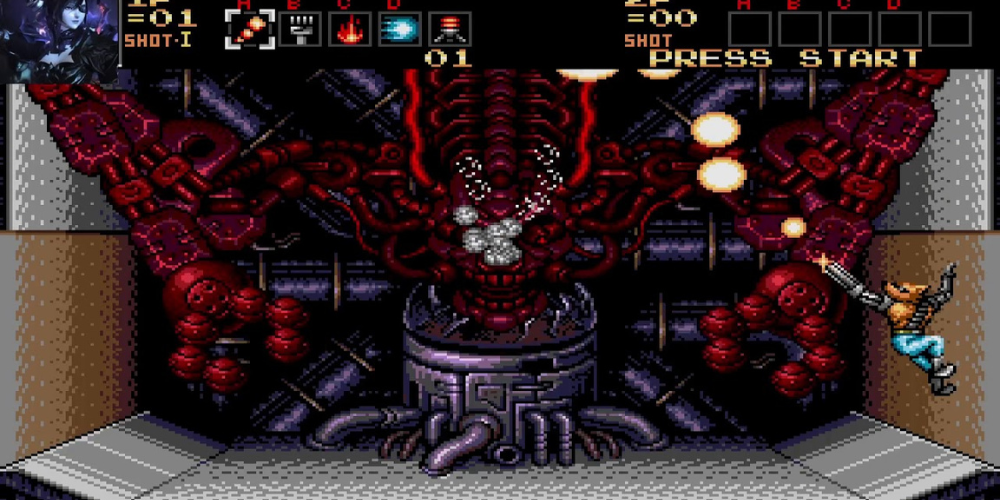Pixelated Nostalgia: Retro Graphics Reignite Gaming Passions
- 2024-02-10
Introduction to the Retro Renaissance
In a world where gaming graphics continually push the boundaries of realism, there arrives a surprising yet emphatic resurgence of retro graphics in mainstream PC gaming. This trend toward pixel-perfect aesthetics is rooted in nostalgia, simplicity, and an appreciation for the artistry of old-school game design. The technology that once was a limitation has now become a celebrated art form, a callback to the days when imagination bridged the gap between blocky sprites and their intended representations. In this comprehensive account, we will explore the multifaceted aspects of the comeback of retro graphics in contemporary gaming culture.
The Allure of 8-Bit Visuals in the Modern Age
The unmistakable charm of 8-bit and 16-bit visuals from the golden era of gaming has managed to carve its legacy into the silicone hearts of modern games. It's more than mere pixels on a screen; it's the evocation of a simpler time when gaming was kicking off its journey into our homes and lives. Despite the capability of modern PCs to render hyper-realistic worlds, a significant portion of the gaming community finds solace in the simplicity and clarity of retro graphics. This visual style has attracted not only those who grew up with classic consoles but also a younger audience that finds the distinct aesthetic fresh and experimental.
Emotional Resonance and Nostalgic Appeal

Retro graphics tap into a powerful sense of nostalgia, evoking memories of childhood and early gaming experiences. For many, pixelated games unlock emotional resonance, allowing them to relive and share moments that modern photorealistic graphics can't necessarily replicate. This sentimental value places retro graphics high on the list of gaming preferences for a large swath of players.
Trendsetting Indie Developers
One cannot discuss the resurgence of retro graphics without acknowledging the role of indie developers. These creative forces, often restricted by budget constraints, embraced pixel art out of necessity and transformed it into a trademark of innovation and artistic expression. Through fostering community and often courageous storytelling, indie games like "Shovel Knight" and "Stardew Valley" have showcased that the essence of gaming lies not in its graphical fidelity but in gameplay and heart.
The Mechanics Behind the Pixels
At the core of the retro graphic resurgence is a nod to the game mechanics that once inhabited these pixelated worlds. The simplicity of early graphics went hand-in-hand with straightforward yet challenging gameplay. Many modern games adopting retro aesthetics also choose to emulate or reinvent these mechanics, delivering a sense of familiarity that complements the visual style. Platformers, RPGs, and puzzle games from the 8- and 16-bit eras provide blueprints that are surprisingly compatible with modern gaming tastes, proving that good design is timeless.
Strategic Limitations and Design Philosophy

Limitations that were once seen as technical shortcomings are now viewed as a design philosophy. Pixel art requires a meticulous level of attention to color, shape, and animation within a constrained space. The creativity that flows from these restrictions often results in highly stylized and immediately recognizable game worlds. The challenge of creating something evocative with limited resources is a dance between ingenuity and constraint, giving birth to games that honor the art of design in its purest form.
Accessibility and Development
With engines and tools such as Unity, GameMaker, and PICO-8, the technical barriers to game development have significantly lowered, allowing developers to adopt retro styles without needing expansive resources. These platforms also present entry points for budding game creators to learn the ropes without becoming overwhelmed by the complexities of 3D modeling and texturing.
Community Engagement and the Supportive Ecosystem
The gaming community has played a vital role in the resurgence of retro graphics. Online platforms and social media allow fans to share their love for pixel art, fostering a supportive and engaged community that appreciates and often builds upon the retro aesthetic. Crowdfunding sites have also opened doors for projects that might otherwise go unfunded, signaling an active demand for retro-styled games. Conventions, online forums, and game jams continue to consolidate the community of like-minded enthusiasts, developers, and artists who keep the retro flame burning bright.
Collaborative Efforts and Retro Revivals
![]()
Enthusiasts frequently collaborate on projects that revive or reimagine classic titles, ensuring that the games of yesteryear continue to inspire and entertain. From fan-made mods to officially licensed remakes, these collaborative efforts often incorporate modern design principles while maintaining the intrinsic charm of the original pixel graphics. This cooperative spirit is a testament to the enduring impact of classic gaming experiences.
Role of Streaming and Content Creation
Content creators and streamers have also contributed to the pixel art revival by showcasing retro games and contemporary titles that use pixelated graphics. As viewers watch their favorite personalities tackle these games, the visual style becomes normalized and even celebrated within the gaming community. Leveraging platforms like Twitch and YouTube, players and creators demonstrate that sometimes, less can indeed be more.
Pixel Perfect: Retro Graphics in Esports and Competitive Gaming
Although the esports scene is dominated by games boasting cutting-edge graphics, there's a niche for retro-inspired titles that focus on skill and strategy. Games like "Celeste" and "TowerFall Ascension" prove that pixel art can still deliver intense, competitive experiences. The visual clarity and responsiveness inherent to many retro games are qualities highly valued in the esports domain, proving that old-school graphics are more than just a visual choice; they're a design statement about performance and accessibility.
Challenges and Opportunities
![]()
The rise of retro graphics in esports presents both challenges and opportunities. While the nostalgic appeal may not resonate with all spectators, it opens the gates for unique branding and community-building efforts. Developers and event organizers who harness the retro aesthetic can differentiate their offerings, appealing to gamers seeking a blend of modern competitive gaming with a retro twist.
Bridging Generations Through Competition
These pixelated competitions have a unique power to bridge generational gaps within the gaming community. Older players may find themselves on equal footing with younger competitors as the focus shifts from graphical prowess to pure skill. This common ground fosters a cross-generational dialogue and exchange of gaming culture that enriches the broader community.
Market Dynamics and the Future of Retro Graphics in Gaming
The market dynamics of PC gaming reveal that there's a growing space for games that eschew hyper-realistic graphics in favor of a pixel-perfect retro approach. As players and critics alike expressed a desire for more stylistically diverse games





